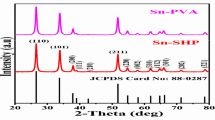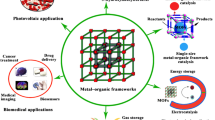Abstract
Carbon nanotubes (CNT) are among the most striking discoveries in the search for new materials as drug delivery carrier. In the present work, multiwalled CNT (MWCNT) functionalized with polyvinyl alcohol (PVA) was developed as a potential carrier for Curcumin (Cur). The aim was to investigate its loading and release efficiency in vitro. To achieve this goal, pristine MWCNT (p-MWCNT) was firstly oxidized by acids and functionalized with PVA. Next, systematic evaluation of Cur loading efficiency on PVA-MWCNT was determined using adsorption kinetics and isotherm studies and was compared to p-MWCNT and oxidized-MWCNT (ox-MWCNT). The release of Cur was analyzed in physiological buffer pH 7.4 and 5.5. From the results, all MWCNT adsorbed Cur rapidly and well described by the pseudo-second order model. The isotherm results suggest that the PVA-MWCNT and p-MWCNT obey Freundlich isotherm model with maximum Cur adsorption (kf) of 5.1 and 69.0 mg/g, respectively, while Cur adsorption on ox-MWCNT followed Langmuir isotherm model with maximum adsorption (qm) of 714.3 mg/g. Cur desorbed significantly (25–30%) from PVA-MWCNT at pH 5.5 than that of pH 7.4, with a sustained release over 3 days of incubation. The results suggest its weak binding interaction to the PVA-MWCNT has facilitated its release at lower pH, compared to ox-MWCNT that occurred via chemisorption. The p-MWCNT ranked the lowest with 4–6% Cur released at both pHs. Overall, the initially developed drug delivery system was considered successful for loading and the release of Cur, which potentially benefit disorders related to cancer or oxidative-related injuries in the future.









Similar content being viewed by others
References
Firme III CP, Bandaru PR (2010) Toxicity issues in the application of carbon nanotubes to biological systems Nanomedicine 62(3):362–374
Dumortier H, Lacotte S, Pastorin G, Marega R, Wu W, Bonifazi D, Briand JP, Prato M, Muller S, Bianco A (2006) Functionalized carbon nanotubes are non-cytotoxic and preserve the functionality of primary immune cells Nano Lett 6:1522
Nimmagadda A, Thurston K, Nollert MU, McFetridge PS (2006) Chemical modification of SWNT alters in vitro cell-SWNT interactions J. Biomed Mater Res A 76A:614
Murugesan S, Park TJ, Yang H, Mousa S, Linhardt RJ (2006) Blood compatible carbon nanotubes—nano-based neoproteoglycans Langmuir 22:3461
Wang S, Gao Q, Luo WJ, Xu C, Zhou G, Xia H (2013) Removal of methylene blue from aqueous solution by magnetic carbon nanotube Water Sci Technol 68(3):153–161
Yao Y, Xu F, Chen M, Xu Z, Zhu Z (2010) Adsorption behavior of methylene blue on carbon nanotubes Bioresour Technol 101:3040
Yang K, Xing B (2009) Adsorption of fulvic acid by carbon nanotubes from water Environ Pollut 157:1095
Liu Y, Liy Y, Zhang J, Wu X, Wei J, Pei D, Di D (2015) Adsorption behaviors for oleuropein from olive oil leaves extracts by porous materials with carbon nanotubes Colloid Polym Sci 293:2395–2404
Mphahlele K, Onyango MS, Mhlanga SD (2015) Adsorption of aspirin and paracetamol from aqueous solution using Fe/N-CNT/B-cyclodextrin nanocomposites synthesized via a benign microwave assisted method J Environ Chem Eng 3(4):2619–2630
Wang WL, Wu QY, Wang ZM, Niu LX, Wang C, Sun MC, Hu HY (2015) Adsorption removal of antiviral drug oseltamivir and its metabolite oseltamivir carboxylate by carbon nanotubes: effects of carbon nanotubes properties and media J Environ Manag 162:326–333
Liu Z, Sun X, Nakayama-Ratchford N, Dai H (2007) Supramolecular chemistry on water-soluble carbon nanotubes for drug loading and delivery ACS Nano 1(1):50–56
Zhang X, Meng L, Lu Q, Fei Z, Dyson PJ (2009) Targeted delivery and controlled release of doxorubicin to cancer cells using modified single wall carbon nanotubes Biomaterials 30:6041
Heister E, Neves V, Lamprecht C, Silva SRP, Coley HM, MacFadden J (2012) Drug loading, dispersion stability, and therapeutic efficacy in targeted drug delivery with carbon nanotubes Carbon 50:622–632
Skwarczynski M, Hayashi Y, Kiso Y (2006) Paclitaxel prodrugs: toward smarter delivery of anticancer agents J Med Chem 49:7253–7269
Ren YP, Pastorin G (2008) Incorporation of hexamethylmelamine inside capped carbon nanotubes Adv Mater 20:2031–2036
Thakur VK, Thakur MK (2015) Chemical functionalization of carbon nanomaterials: chemistry and applications, vol 36. CRC Press, Boca Raton,
Lay CL, Liu HQ, Tan HR, Liu Y (2010) Delivery of paclitaxel by physically loading onto poly(ethylene glycol) (PEG)-graft-carbon nanotubes for potent cancer therapeutics Nanotechnology 21:065101
Dhillon N, Wolff RA, Abbruzzese JL, Hong DS, Camacho LH, Li L, Braiteh FS, Kurzrock R (2006) Phase II clinical trial of curcumin in patients with advanced pancreatic cancer J Clin Oncol Abstract 24(18S):14151
Mishra S, Palanivelu K (2008) The effect of curcumin (turmeric) on Alzheimer’s disease: an overview Ann Indian Acad Neurol 11(1):13–19
Kinnear C, Burnand D, Clift MJD, Kilbinger AFM, Rothen-Rutihauser B, Petri-Fink A (2014) Polyvinyl alcohol as a biocompatible alternative for the passivation of gold nanorods Angew Chem Int Ed 53(46):12613–12617
Stubbs M, Mcsheehy PMJ, Griffifths JR, Bashford CL (2000) Causes and consequences of tumor acidity and implications for treatment Mol Med Today 6:15–19
Ahmad Zawawi N, Abdul Majid Z, Abdul Rashid NA (2016) Effect of acid oxidation methods on multi-walled carbon nanotubes (MWCNT) for drug delivery application IJASRM 1(11):14–22
Sahoo NG, Bao H, Pan Y, Pal M, Kakran M, Cheng HKF, Li L, Tan LP (2011) Functionalization carbon nanomaterials as nanocarriers for loading and delivery of poorly water soluble anticancer drug: a comparative study Chem Comm 47(18):5235–5237
Li H, Zhang N, Wang Y, Jia S, Zhang H, Zhang Y, Zhang Z (2014) Formulation of curcumin delivery with functionalized single-walled carbon-nanotubes: characteristics and anticancer effects in vitro Drug Deliv 21(5):379–387
Malikov EY, Muradov MB, Akperov OH, Eyvazova GM, Puskás R, Madaráz D, Nagy L, Kukovecz Á, Kónya Z (2014) Synthesis and characterization of polyvinyl alcohol based multiwalled carbon nanotube nanocomposites Phys E 61:129–134
Dresselhaus MS (1998) Carbon nanotubes—introduction J Mater Res 13:2355–2356
Osorio AG, Silveria ICL, Bueno VL, Bergmann CP (2008) H2SO4/HNO3/HCl—functionalization and its effect on dispersion of carbon nanotubes in aqueous media Appl Surf Sci 255:2485–2489
Agnihotri S, Mota JPB, Rostam-Abadi M, Rood MJ (2006) Adsorption site analysis of impuritu embedded single-walled carbon nanotube bundles Carbon 44:23762383
Shaffer MSP, Fan X, Windle AH (1998) Dispersion and packing of carbon nanotubes Carbon 36(11):1603–1612
Datsyuk V, Kalyva M, Papagelis K, Parthenios J, Tasis D, Siokou A, Kallitsis I, Galiotis C (2008) Chemical oxidation of multiwalled carbon nanotubes Carbon 46:833–840
Gimenez V, Mantecom A, Cadiz V (1996) Modification of poly(vinyl alcohol) with acid chlorides and crosslinking with difunctional hardeners J Polym Sci Part A: Polym Chem 34:92534
Xue YJ, Hou HB, Zhu SJ (2009) Adsorption removal of reactive dyes from aqueous solution by modified basic oxygen furnace slag: isotherm and kinetic study Chem Eng J 147:272–279
Lagergren S (1898) About the theory of so-called adsorption of soluble substance Kungl Sven Vetenskapsakademiens Handl 24:1–39
Uzun I (2006) Kinetics of the adsorption of reactive dyes by chitosan Dyes Pigments 70:76
Chen Z, Pierre D, He H, Tan S, Pham-Huy C, Hong H, Huang J (2011) Adsorption behavior of epirubicin hydrochloride on carboxylated carbon nanotubes Int J Pharm 405(1–2):153–161. doi:10.1016/j.ijpharm.2010.11.034
Wang Y, Yang ST, Wang Y, Liu Y, Wang H (2012) Adsorption and desorption of doxorubicin on oxidized carbon nanotubes Colloids Surf B Biointerfaces 97:62–69
Iscen CF, Kiran I, Ilhan S (2007) Biosorption of reactive black 5 dye by Penicillium restrictum: the kinetic study J Hazard Mater 143:335–338
Gotovac S, Song L, Kanoh H, Kaneko K (2007) Assembly structure control of single wall carbon nanotubes with liquid phase naphthalene adsorption Colloids Surf A Physicochem Eng Asp 300:117–121
Ng C, Losso JN, Marshall WE, Rao RM (2002) Freundlich adsorption isotherms of agricultural by-product-based powdered activated carbon s in geosmin water system Bioresour Technol 85:131–133
Lugo-Lugo V, Henandez-Lopez S, Barrear-Diaz C, Urena-Nunez F, Bilyeu B (2009) A comparative study of natural, formaldehyreated and co-polymer-grafted orange peel for Pb(II) adsorption under batch and continuous mode J Hazard Mater 161:1255–1264
Lim CK, Neoh CH, Aris A, Abdul Majid ZA, Ibrahim Z (2013) Application of zeolite-activated carbon macrocomposite for the adsorption of Acid Orange 7: isotherm, kinetic and thermodynamic studies Environ Sci Pollut Res 20(10):7243–7255
Wang JH, Han XJ, Ma HR, Ji YF, Bi LJ (2011) Adsorption removal of humic acid from aqueous solution on polyaniline/attapulgite composite Chem Eng J 173:171–177
Ajmal M, Rao RAK, Ahmad R, Ahmad J (2000) Adsorption studies on Citrus recticulate (fruit peel of orange):removal and recovery of Ni (II) from electroplating wastewater J Hazard Mater 79:117–131
Pan K, Xing B (2008) Adsorption mechanism of organic chemicals on carbon nanotubes Environ Pollut 157:1095
Tian Y, Gao B, Chen H, Wang Y, Li H (2013) Interactions between carbon nanotubes and sulfonamide antibiotics in aqueous solutions under various physicochemical conditions J Environ Sci Heal A 48:1136–1144
Förch R (2009) Tutorial review: surface modification and adhesion. In: Förch R, Schönlerr H, Tobias A, Jenkins ATA (eds) Surface design and applications in bioscience and nanotechnology. Wiley, Chichester, pp. 55–80
Lu YJ, Wei KC, Ma CCM, Yang SY, Chen JP (2012) Dual targeted delivery of doxorubicin to cancer cells using folate-conjugated magnetic multi-walled carbon nanotubes Colloids Surf B Biointerfaces 89:1–9
Sun-Wada GH, Wada Y, Futai M (2003) Lysosome and lysosome-related organelles responsible for specialized functions in higher organisms, with special emphasis on vacuolar-type proton Atpase Cell Struct Funct 28:455–463
Tannock IF, Rotin D (1989) Acid pH in tumors and its potential for therapeutic exploitation Cancer Res 49:4373–4384
Liu Y, Wang W, Yang J, Zhou C, Sun J (2013) pH-sensitive polymeric micelles triggered drug release for extracellular and intracellular drug targeting delivery Asian J Pharm Sci 8:159–167
David J, Cheek N (2012) Acoustic sensors.Fundamentals and applications of ultrasonic waves, 2nd edn. CRC Press, USA,
Pirchi M, Marksteiner J, Humpel C (2006) Effects of acidosis on brain capillary endothelial cells and cholinergic neurons: relevance to vascular dementia and Alzheimer’s disease Neurol Res 28(6):657–664. doi:10.1179/016164106 X130371
Acknowledgements
This research project was financially supported by the Ministry of Higher Education Malaysia (MOHE) and Universiti Teknologi Malaysia (Encouragement Grant, Tier-2 No. Q.J130000.2645.11 J32).
Author information
Authors and Affiliations
Corresponding author
Ethics declarations
Disclosure
The authors report no conflict of interest in this work.
Rights and permissions
About this article
Cite this article
Zawawi, N.A., Majid, Z.A. & Rashid, N.A.A. Adsorption and desorption of curcumin by poly(vinyl) alcohol-multiwalled carbon nanotubes (PVA-MWCNT). Colloid Polym Sci 295, 1925–1936 (2017). https://doi.org/10.1007/s00396-017-4163-0
Received:
Revised:
Accepted:
Published:
Issue Date:
DOI: https://doi.org/10.1007/s00396-017-4163-0




